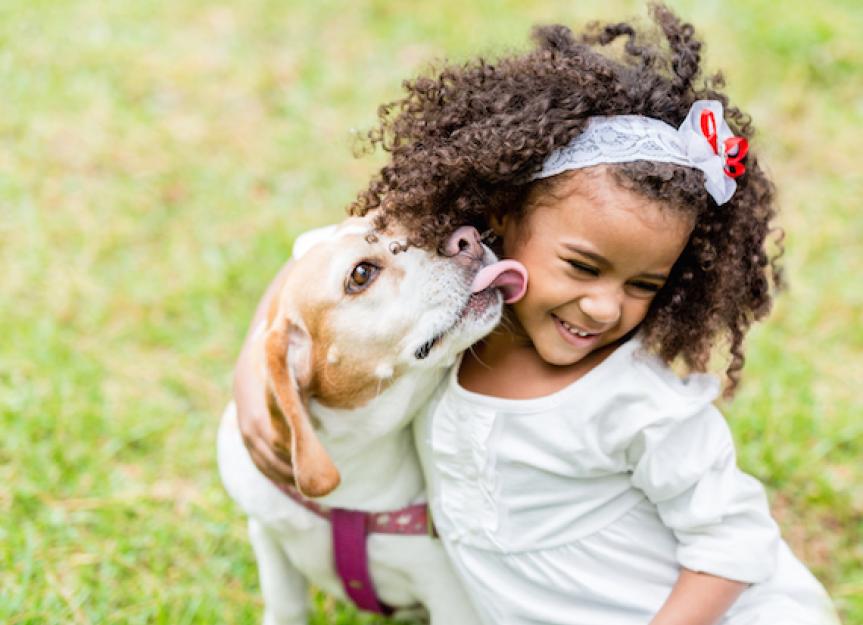Pet 'Kisses': Health Hazard or Health Benefit?
Last reviewed on January 22, 2016
Your veterinarian tells you to avoid letting your pets lick the faces of the family. She lists the numerous parasites and bacteria possibly present in pet saliva that may affect family members. Yet recent research suggests that the ancient practice of dog licking may indeed aid wound healing. Myblog from two week agolooked at new research suggesting that dog intestinal bacteria may have a protective role against asthma in children.
So, is pet saliva a health hazard or benefit? The answer is probably both. However, routine veterinary care and simple sanitary practices can reduce fears that your pet’s lick is a family health risk.
Why Are Pets Health Hazards?
The mouth and the intestines of pets can harbor bacteria and parasites that can be transmitted to humans. They can cause an assortment of medical conditions in humans. Diseases transmitted from animals to humans are called “zoonotic” (zo-not-ick).
Bacteria:
Pastuerellais a normal inhabitant of the mouth in cats and dogs that can cause skin, lymph node and, sometimes, more severe infections.Bartonella henselae, a bacterium that is transmitted to cats from fleas is also housed in the cats’ mouths. It is the cause of a severe skin and lymph node infection called cat-scratch-fever. Theoretically, humans can be infected by these bacteria by coming in contact with the saliva from a cat or dogs lick. The Center for Disease Control reports that mostpastuerellaandbartonellainfections are the result of bites and scratches. Little data are available to substantiate that being licked by a pet is a major means of infection
Salmonellla,E. coli, ClostridiaandCampylobacterare intestinal bacteria of pets that can cause severe intestinal disease in humans. The pets can be free of symptoms yet pass these bacteria in their feces (poop). Most human infection is generally due to oral contact of hands contaminated by the pet’s feces or fecal residue. Because pets lick their anus (butt), these bacteria can also be present in the mouth. Facial and lip licking is a potential route of infection from pet to human. Again, there is little proof that this is actually a major means of transmission.
Parasites:
Pets are hosts for many parasitic worms and single celled parasites. Human infection from these parasites can result in intestinal disease, skin problems, blindness, and brain disorders. Pets may live with these parasites in their intestines with no signs of illness. But eggs passed in the pet’s feces can infect humans. Like bacteria, the major route of infection to humans is fecal-oral. Pets that have licked their anus can potentially pass the parasite eggs to humans during facial licking.
With the exception of two single celled parasites,GiardiaandCryptosporidia, this type of infection is not likely. Most parasite eggs are not infective directly from the anus. They must undergo a period of maturation in the feces or contaminated environment in order to infect humans. Transmission to humans would require dogs licking human faces after mouthing or eating feces that was one to 21 days old, depending on the parasite. Because cats are not feces eaters (coprophagic), humans are unlikely to become infected by parasites from their cats.
GiardiaandCryptosporidiaare immediately infective so potentially could be transmitted by a lick.
The Benefits of Pet Saliva
The belief in the curative power of a dog’s lick dates back to ancient Egypt and has persisted through time. In modern France a medical saying translates to “A Dog’s Tongue is a doctor’s tongue.” Recent research has identified products in saliva that indeed aid in healing.
- Researchers in the Netherlands identified a chemical in pet saliva called histatins. Histatins speed wound healing by promoting the spread and migration of new skin cells.
- Dr. Nigel Benjamin of the London School of medicine has shown that when saliva contacts skin it creates nitric oxide. Nitric oxide inhibits bacterial growth and protects wounds from infection.
- Researchers at the University of Florida isolated a protein in saliva called Nerve Growth Factor that halves the time for wound healing.
Prudent Precautions With Pet Saliva
The risk of bacterial or parasitic infection from pet licks are the greatest for very young children, the aged, and immunosuppressed individuals on chemotherapy or inflicted with AIDS. Individuals with healthy immune systems are unlikely to become infected. Despite the relatively low risk of infection from pet licks, some sensible precautions by pet owners are in order. The Companion Animal Parasite Council recommends:
- Regular deworming programs
- 年度宠物粪便检查和适当的蚂蚁i-parasite treatment
- Treatment to control fleas and ticks
- Daily disposal of pet feces and compliance with pooper-scooper laws
- Covering children’s sandboxes when not in use
- Feeding cooked, canned, or dry dog orcat food
- Washing or cooking vegetables for human consumption
- Adequate hand washing after exposure to feces or fecal contamination.

Dr. Ken Tudor
Related
The Tongue Does Not Heal All Wounds
Should We Let Pets Clean Their Own Wounds?
Image:Andresr/ Shutterstock
Help us make PetMD better
Was this article helpful?
